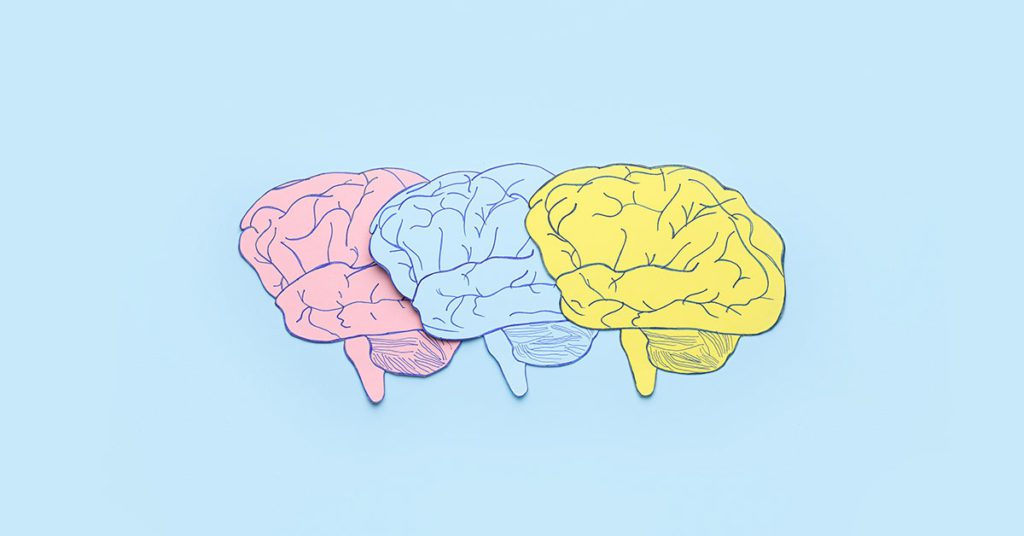Some people are born without the ability to form mental images—a condition called congenital aphantasia. It affects about 2% of the population, or 1 in 50 people. Congenital aphantasia can interrupt people’s memory and learning. Find out more about congenital aphantasia and how it affects everyday life.
What Is Congenital Aphantasia?
If someone asked you to close your eyes and imagine a rainbow, could you do it? People born with aphantasia can’t. It’s a condition that affects the ability to visualize mental images.
People with congenital aphantasia are born without the ability to visualize mental images.
Acquired aphantasia is another form of the condition that develops due to illness or trauma.
Statistics of Mental Imagery contains the first reference to aphantasia. In 1880, an English psychologist named Francis Galton decided to conduct an experiment. He asked a group of participants to close their eyes and imagine the scene of their morning breakfast table. He asked each person to rank the clarity of the image in their mind based on three parameters:
- Illumination: The vividness of the image
- Definition: The sharpness of the objects
- Coloring: The colors of the objects
To his surprise, a good portion of the participants had little to no ability to picture the images in their heads. In fact, some of them had no notion of what mental imagery even meant.
Much of what we understand about congenital aphantasia still remains limited today. Dr. Adam Zeman, Professor of Cognitive and Behavioural Neurology at the University of Exeter, has led studies to gain a better understanding of aphantasia.
Professor Adam Zeman defines aphantasia as “reduced or absent voluntary imagery” He came up with the name based on the Greek words: a-, meaning “without,” and -phantasia, “the ability to form mental images.”
Dr. Zeman works with children that have congenital aphantasia. So far, they haven’t linked it to any learning disabilities. He did observe that children with the condition seem to enjoy descriptive texts.
The Effects of Congenital Aphantasia
Mental imagery helps with memory, daydreaming, and imagination. It also plays an important role in learning, particularly when it comes to reading comprehension and vocabulary.
According to the Dual-Coding Theory, mental imagery reinforces learning and recall. It helps school children remember what they read. Students can also use mental imagery to memorize vocabulary.
Visualization is also helpful to learn math and computer science. Both subjects involve understanding patterns within numbers and forming mental memory of the spatial relationships between them.
Research is uncovering the benefits of visualization for all sorts of skills. For example, many elite athletes practice visualization to train for a competition. A study compared training schedules that combined physical drills and visualization exercises. The group that devoted more time to visualization performed better at the Olympics!
But people with congenital aphantasia cannot rely on these kinds of visualization techniques. This can interrupt their ability to learn and their educational performance.
The Research Behind Aphantasia
Assistant professor of psychology at the University of Chicago and expert on neuroscience Wilma Bainbridge also studies aphantasia. She and her colleagues conducted a congenital aphantasia test. During the study, they showed photographs of three rooms to participants with a spectrum of visual memory capabilities, some with aphantasia and some with typical visualization abilities.
They asked each person to draw the rooms, both from memory and while referencing the photo. Both groups scored equally when copying directly from the photograph. But, the two groups scored differently when it came to drawing from memory. This suggests that the score differences reflected memory, rather than artistic ability or effort.
When drawing from memory, those with aphantasia were able to include objects that they remembered in the correct location but had trouble remembering details of the room. These individuals also made fewer mistakes. For example, they didn’t draw objects that weren’t in the photo. Compare that to participants with typical visualization imagination, who often mistakenly drew objects that weren’t in the photos.
The results suggest that people with aphantasia have to rely on other types of memory to perform these kinds of tasks. People with aphantasia likely use strategies like verbal coding of space to help remember the photo scenes. This could help them avoid making mistakes, like drawing the wrong objects. The study also reveals that aphantasia does not affect recognition.
Researchers are still learning about aphantasia and its effect on memory. So far, they have not pinpointed which brain regions cause the condition, and they have yet to come up with a cure. As we learn more about the brain and memory, it may reveal the causes of congenital aphantasia and ways to recover the ability to visualize images in the mind.
Related reading:





